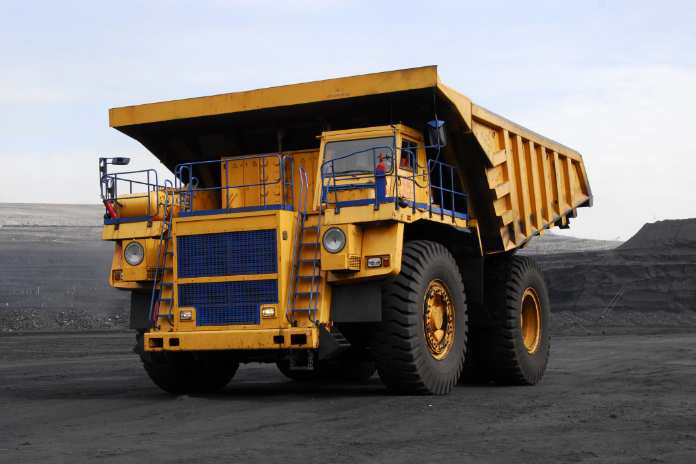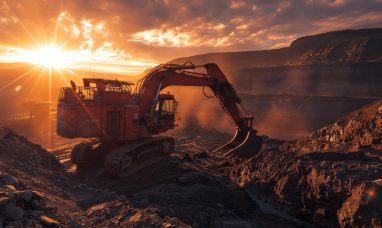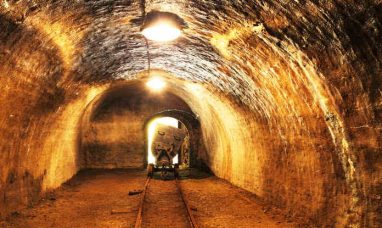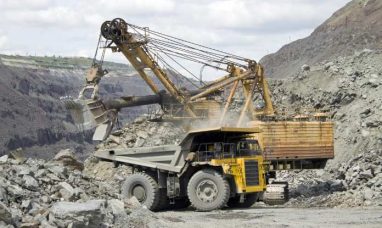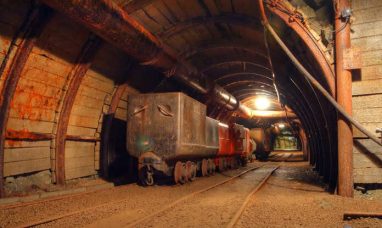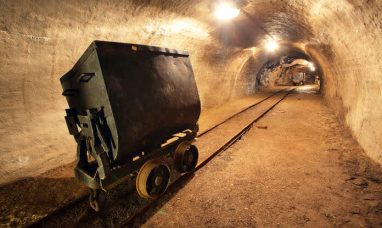NEW YORK, Jan. 21, 2025 /PRNewswire/ — Report with market evolution powered by AI – The global steel casting market size is estimated to grow by USD 7.23 billion from 2025-2029, according to Technavio. The market is estimated to grow at a CAGR of 4.4% during the forecast period. Growing construction activities is driving market growth, with a trend towards introduction of automation in die casting process. However, environmental concerns related to casting industry poses a challenge. Key market players include ArcelorMittal SA, Columbia Steel Casting Co Inc., Doosan Corp., Ferralloy Inc., Fortune Foundries Pvt. Ltd., Fundiciones Del Estanda SA, Goodwin PLC, Harrison Steel Castings Co., Hitachi Ltd., Hyundai Steel Co., Isgec Heavy Engineering Ltd., Kobe Steel Ltd., Liaoning Borui Machinery Co. Ltd., Maynard Steel Casting Co., Milwaukee Precision Casting Inc., Nucor Corp., Peekay Steel Castings Pvt. Ltd., SIGMA Engineered Solutions, Stainless Foundry and Engineering Inc., and The Japan Steel Works Ltd..
AI-Powered Market Evolution Insights. Our comprehensive market report ready with the latest trends, growth opportunities, and strategic analysis- View Free Sample Report PDF
|
Steel Casting Market Scope |
|
|
Report Coverage |
Details |
|
Forecast period |
2025-2029 |
|
Base Year |
2024 |
|
Historic Data |
2019 – 2023 |
|
Segment Covered |
Application (Automotive and transportation, Construction and infrastructure, Mining, Power, and Others), Product (Sand casting, Investment casting, Die casting, and Centrifugal casting), and Geography (APAC, North America, Europe, Middle East and Africa, and South America) |
|
Region Covered |
APAC, North America, Europe, Middle East and Africa, and South America |
|
Key companies profiled |
ArcelorMittal SA, Columbia Steel Casting Co Inc., Doosan Corp., Ferralloy Inc., Fortune Foundries Pvt. Ltd., Fundiciones Del Estanda SA, Goodwin PLC, Harrison Steel Castings Co., Hitachi Ltd., Hyundai Steel Co., Isgec Heavy Engineering Ltd., Kobe Steel Ltd., Liaoning Borui Machinery Co. Ltd., Maynard Steel Casting Co., Milwaukee Precision Casting Inc., Nucor Corp., Peekay Steel Castings Pvt. Ltd., SIGMA Engineered Solutions, Stainless Foundry and Engineering Inc., and The Japan Steel Works Ltd. |
Key Market Trends Fueling Growth
The Metal Casting Market is thriving, particularly in sectors like Automotive and Telecom. Dies and molds, primarily Sand Mold, are key components in this capital-intensive industry. Regulations driving lightweight vehicles fuel the demand for Aluminum Casting and Recyclable Materials. Cast Iron, including Grey Iron Metal, remains a staple, but Aluminum and Stainless-Steel are gaining ground. The Automotive Sector produces the most units, with Europe leading in vehicle production. Regions like China and the US have high penetration. Average selling prices vary by Material Type and Volume. Foundry Equipment is essential, with alternative manufacturing processes gaining traction. Components like Powertrains, Body & Chassis, and Industrial Products are in high demand. Emission Regulations influence Aluminum Content in Automotive Production. The Building & Construction Industry, Infrastructure Projects, Transportation, Water Supply, and Energy Networks also rely on Lightweight casting materials like Aluminum Alloy. The Metal Casting Industry’s regional-level production numbers and average selling prices are crucial. Skilled Labor remains a challenge. The World Foundry Organization advocates for industry growth and adherence to regulations. Iron Casting, including Ductile Iron, and Magnesium are also used extensively.
For two decades, the manufacturing industry has experienced a consistent growth in the utilization of industrial robots. These robots bring about significant advantages such as increased efficiency, enhanced flexibility, reduced cycle time, and heightened precision in producing final products. In the casting sector, robots are increasingly being integrated with computer numerical control tools in casting machines to generate high-quality, dependable, and accurate cast parts. Robots are primarily employed in foundries for pouring molten metal into die casts and extracting completed products. For instance, Buhlers Ecoline Pro incorporates Buhler Multistep technology, providing engineers with superior flexibility for designing programs.
Insights on how AI is driving innovation, efficiency, and market growth- Request Sample!
Market Challenges
- The Metal Casting Market faces challenges in various sectors, including Automotive and Telecom. In the Automotive Sector, the shift to lightweight vehicles requires more Aluminum Casting and less Cast Iron, like Grey Iron Metal. Regulations, such as emission norms, drive the demand for Recyclable Materials. The Automotive Production in the European Union (EU) is a significant market for Aluminum and Stainless-Steel castings. The Metal Casting Industry is a capital-intensive sector that requires Skilled Labor and advanced Foundry Equipment. The Automotive Industry’s vehicle production volume and penetration of Aluminum Content vary regionally, with thousands of units produced annually. The Average Selling Price of components depends on the Material Type, be it Aluminum Alloy, Ductile Iron, or Magnesium. Regulations, like Emission Regulations, impact the use of alternative manufacturing processes. The Industrial Products sector, including Building & Construction Industry, Infrastructure Projects, Transportation, Water Supply, and Energy Networks, also rely on Steel Casting for various Components. The Top-down approach to designing components considers the Volume of the castings required and the Processed Material used.
- The steel casting market is subject to various environmental regulations aimed at reducing pollution from foundries. These regulations, such as the Metal Molding and Casting (MMC) effluent guidelines and standards (40 CFR Part 464) by the Environmental Protection Agency (EPA), require foundries to control emissions and properly dispose of pollutants generated during the casting process. Foundries must remain informed of these regulations and implement necessary measures to ensure compliance. Failure to do so may result in penalties and negative impacts on business reputation. Adhering to these regulations is crucial for maintaining a sustainable and responsible steel casting industry.
Insights into how AI is reshaping industries and driving growth- Download a Sample Report
Segment Overview
This steel casting market report extensively covers market segmentation by
- pplication
- 1.1 Automotive and transportation
- 1.2 Construction and infrastructure
- 1.3 Mining
- 1.4 Power
- 1.5 Others
- Product
- 2.1 Sand casting
- 2.2 Investment casting
- 2.3 Die casting
- 2.4 Centrifugal casting
- Geography
- 3.1 APAC
- 3.2 North America
- 3.3 Europe
- 3.4 Middle East and Africa
- 3.5 South America
1.1 Automotive and transportation- The automotive and transportation segment led the global steel casting market in 2024, accounting for a significant share. Steel casting is extensively utilized in automotive manufacturing for producing various components such as drums, engine casings, gears, suspension systems, steering systems, pipe fittings, exhaust systems, and cylinder heads. In the automotive industry, the increasing global vehicle production volume will fuel the demand for steel casting. Major automobile producers like Germany, South Korea, Japan, India, and China are significant manufacturing hubs for automotive vehicle production. The railway and locomotive sector also relies heavily on steel casting for producing chocks, derailers, heel blocks, joint bars, rail braces, railway tracks and lines, and other locomotive components. In the aerospace industry, steel casting is used for manufacturing turbine engines and aircraft components due to its superior properties. The growing middle-class population, with an annual income between USD20,000 and USD150,000, is projected to increase the demand for freight aircraft. By 2027, this demographic is expected to constitute over 48% of the global population, leading to increased spending on air travel. Consequently, the expanding middle class and rising disposable income will boost the demand for freight aircraft, thereby driving the growth of the steel casting market in the automotive and transportation sector.
Download complimentary Sample Report to gain insights into AI’s impact on market dynamics, emerging trends, and future opportunities- including forecast (2025-2029) and historic data (2019 – 2023)
Research Analysis
The Steel Casting Market is a significant sector in the global manufacturing industry, focusing on the production of various steel castings using processes like sand mold and die casting. The market caters to various industries such as Automotive, Construction, Telecom, and Transportation. In the Automotive Sector, there is a growing trend towards lightweight vehicles, leading to an increased demand for aluminum casting and magnesium components. The Construction Market also relies heavily on steel castings for infrastructure projects, industrial products, and building & construction. Recyclable materials are increasingly being used to reduce environmental impact. Castings are used in various applications, including powertrains, water supply, and energy networks. Emission regulations drive the demand for ductile iron and stainless-steel castings in the Power Generation Industry. The market requires skilled labor and continuous innovation to meet the evolving needs of diverse industries. Cast iron, grey iron metal, and other alloys continue to be in high demand due to their strength and durability.
Market Research Overview
The Steel Casting Market encompasses the production of various types of steel castings, including gray iron, ductile iron, cast iron, and aluminum castings, using processes like sand mold and die casting. The automotive sector is a significant consumer, with lightweight vehicles and emission regulations driving the demand for aluminum and magnesium castings. The telecom industry also utilizes steel castings in the production of industrial products. Regulations, especially in the European Union (EU), are pushing for the use of recyclable materials and alternative manufacturing processes. Vehicle production, infrastructure projects, transportation, water supply, and energy networks are other major industries utilizing steel castings. The metal casting industry is a capital-intensive, labor-intensive sector requiring skilled labor and advanced foundry equipment. Regional-level production numbers and penetration vary, with thousands of units produced annually and average selling prices dependent on material type and volume. Processed materials include various alloys, such as aluminum alloy, and components range from engine parts to body & chassis components. The market employs a top-down approach to production planning and material selection.
Table of Contents:
1 Executive Summary
2 Market Landscape
3 Market Sizing
4 Historic Market Size
5 Five Forces Analysis
6 Market Segmentation
- Application
- Automotive And Transportation
- Construction And Infrastructure
- Mining
- Power
- Others
- Product
- Sand Casting
- Investment Casting
- Die Casting
- Centrifugal Casting
- Geography
- APAC
- North America
- Europe
- Middle East And Africa
- South America
7 Customer Landscape
8 Geographic Landscape
9 Drivers, Challenges, and Trends
10 Company Landscape
11 Company Analysis
12 Appendix
About Technavio
Technavio is a leading global technology research and advisory company. Their research and analysis focuses on emerging market trends and provides actionable insights to help businesses identify market opportunities and develop effective strategies to optimize their market positions.
With over 500 specialized analysts, Technavio’s report library consists of more than 17,000 reports and counting, covering 800 technologies, spanning across 50 countries. Their client base consists of enterprises of all sizes, including more than 100 Fortune 500 companies. This growing client base relies on Technavio’s comprehensive coverage, extensive research, and actionable market insights to identify opportunities in existing and potential markets and assess their competitive positions within changing market scenarios.
Contacts
Technavio Research
Jesse Maida
Media & Marketing Executive
US: +1 844 364 1100
UK: +44 203 893 3200
Email: [email protected]
Website: www.technavio.com/
![]() View original content to download multimedia:https://www.prnewswire.com/news-releases/steel-casting-market-to-grow-by-usd-7-23-billion-2025-2029-driven-by-growing-construction-activities-report-on-how-ai-is-redefining-market-landscape—technavio-302355562.html
View original content to download multimedia:https://www.prnewswire.com/news-releases/steel-casting-market-to-grow-by-usd-7-23-billion-2025-2029-driven-by-growing-construction-activities-report-on-how-ai-is-redefining-market-landscape—technavio-302355562.html
SOURCE Technavio

Featured Image: Megapixl @ Abutyrin









